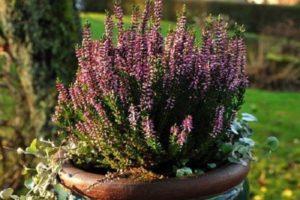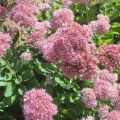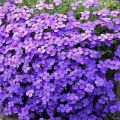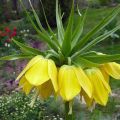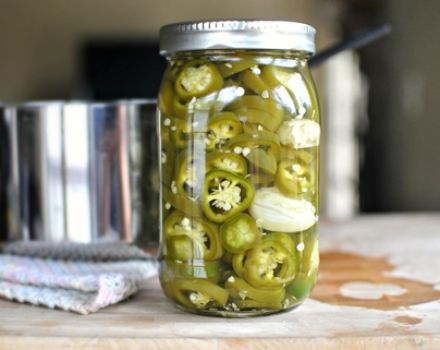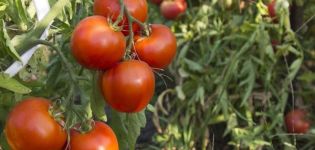Description of varieties and types of stonecrop (sedum) flower, planting and care in the open field
Some plants attract not with exquisite large flowers of unusual shapes, but with large inflorescences. A large number of small stonecrop buds, collected in dense brushes or umbrellas, can become a real decoration of a flower bed. The succulent plant has taken root in dachas and in florists' apartments, delighting with lush greenery and a sea of small flowers. Consider the features of planting and caring for stonecrop, the best types and varieties of flowers.
Culture characteristics
The Latin name for the culture is Sédum. The plant is a succulent, belongs to the Tolstyankov family.
Most species grow as perennial crops, some as biennial crops. The variety of forms often makes sedum unrecognizable - sedum grows in a lush bush or tightly braids the soil with a real carpet. Sedum has dense, fleshy leaves that accumulate moisture and cleanse from drying out. The leaf plates are colored green, gray, and often have pink streaks. Foliage color depends on living conditions.
Flowers are collected in inflorescences in the form of a brush, umbrella or corymbose. Almost all types of sedum have a pleasant smell and are honey plants. The color of stonecrop flowers is varied - pink, white, blue, yellow. It blooms in summer and autumn. In nature, sedum is ubiquitous. There are more than 500 species, of which about a hundred are cultivated. Many varieties and hybrids are created for landscape decoration of sites. Tropical species are grown at home.
Features of application in landscape design
Large inflorescences of sedum and bright luscious greenery can decorate any area. In landscape design, many varieties are used on flower beds to create velvet paintings with alternating colors. Sedum bushes near reservoirs look great. Sedum is planted along the edges of flower beds, to create a curb, and along garden paths. Dense planting of low varieties creates dense lawns that look good even in the absence of flowers - because of the decorative foliage. The creeping forms will hide the gaps of the alpine slides and rockeries.

The benefits of growing at home
Florists have long been growing sedum at home. To ensure flowering, special conditions are required:
- moderate watering;
- lowering the temperature in winter (10-12 °);
- warmth and sun (south side) in summer;
- timely feeding.
Sedum blooms only with experienced florists who can provide the necessary conditions. Even in the absence of flowers, sedum pleases with decorative greenery, the beauty of the bush. Many people value the plant for its medicinal properties. It is used as a biostimulant, similar in effect to aloe leaves. Succulent leaves are used for wounds and injuries to the skin, make healing infusions for pain in the heart and hypotension.
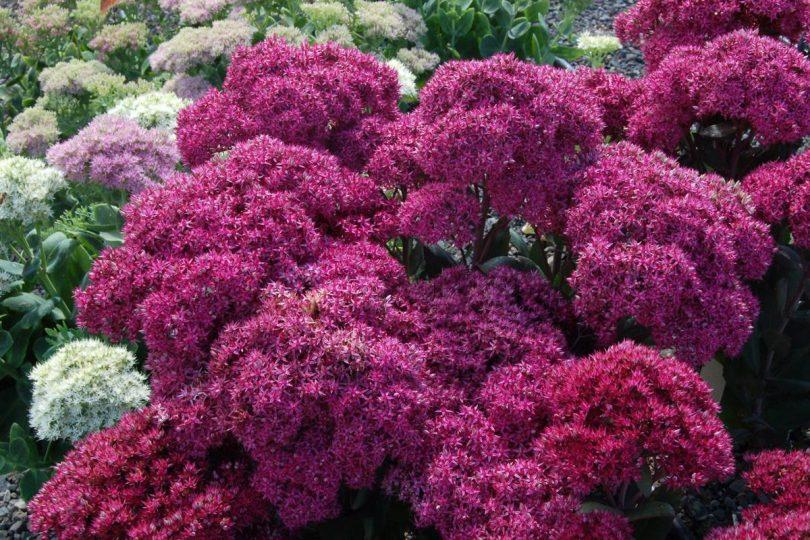
Reference: close relatives of sedum - fat woman, Kalanchoe, Echeveria.
Types and description of sedum varieties
Sedum grows everywhere, the variety of natural forms is great. Plants are so different in appearance that it is sometimes difficult to believe that they belong to the same family. Consider the most popular and favorite types and varieties of stonecrop.
Groundcover
When creating a harmonious flower garden, ground cover plants with creeping stems come to the rescue. They cover the ground and serve as a backdrop for other crops. Sedum plants green the territory with a beautiful juicy carpet, which is colored with bright spots of buds.
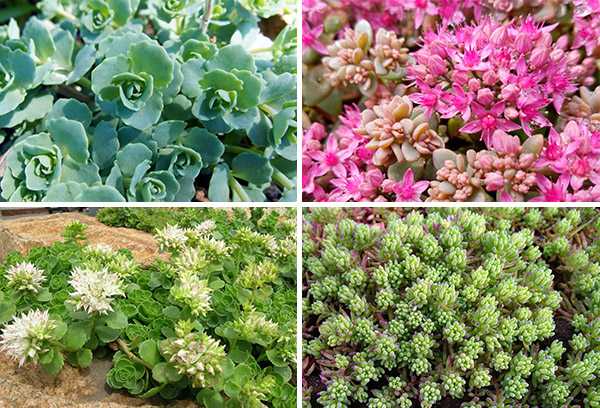
Cornflower
Stonecrop stems grow 8-10 centimeters. The tops of the stems with leaves of a gray-green hue are themselves similar to flowers. The buds are pink-purple, reaching 0.5-0.6 centimeters when opened. Bloom in August.
Siebold's sedum
It has thin recumbent stems and fleshy leaves, collected in whorls of 3 pieces. The leaves are rounded, with a red tint along the edge. The flowers are pink, collected in dense umbrellas or shields.
Forster sedum
Tightens the entire area with a dense, low (10 centimeters) carpet. The foliage is gray-green, interspersed with pink. Yellow flowers rise 20-30 centimeters. Looks good in pots, hanging down.
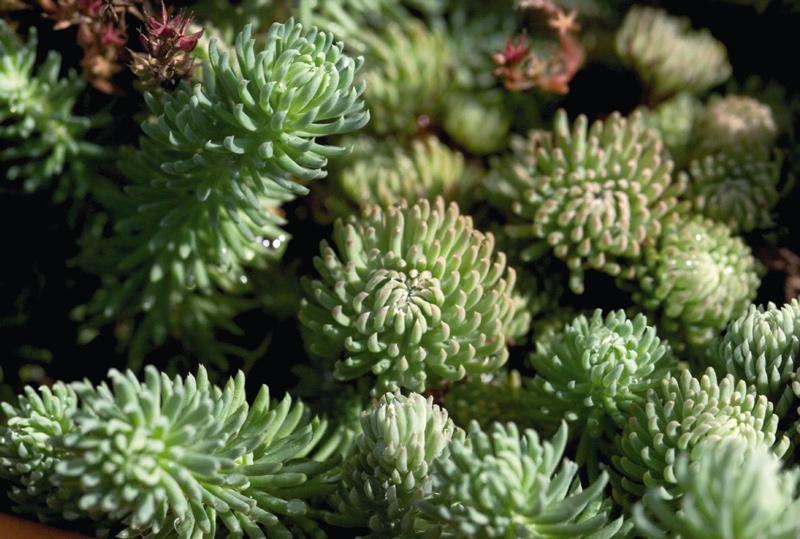
Divergent
A low creeping plant hides all the gaps of flower beds with a thick carpet 5 centimeters high. The foliage turns pink in the sun. Flowers slightly rise above the green mass, they can be pink and yellow.
False
A wonderful plant native to the Caucasus. False sedum is grown on alpine hills, sloping roofs are planted with it. It has a long creeping rhizome, quickly spreads over a large area. The leaves are wedge-shaped, the flowers are pink-purple, the inflorescences are without upper leaves. It blooms for a long time - from June to October.

Sedum caustic
The natural sedum species is successfully grown as a cultivated plant. Low sedum (8-10 centimeters) covers the entire area with a thick green carpet. In the middle of summer it is covered with abundant yellow flowers that attract bees with a pleasant scent.
Lydian
The Lydian sedum covers the ground with real thickets, the stems are covered with a large number of medium-sized elongated fleshy leaves. Grow well in the shade. Flowers are white, not high above the foliage.
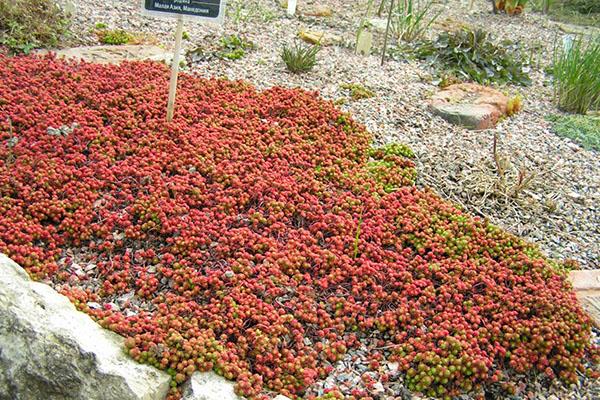
Sedum Evers
Evers sedum is used for landscaping pebble slopes and talus. The plant is planted on alpine hills, they hide bare areas near the house. Blooms in July, flowers last up to 2 months. Ornamental foliage, densely growing on smooth stems. Buds are densely located on corymbose inflorescences. The petals are light pink or crimson.
Subulate
In nature, subulate sedum grows on the mountain slopes of the Caucasus. Shoots with a large number of subulate-linear fragile leaves of a yellow-green hue. The inflorescence is corymbose, dense, with white flowers.
Six-row
Sedum grows up to 8-18 centimeters, the stems branch strongly from the base. The foliage is cylindrical; it grows very densely on the lateral shoots. The color of the leaves is green.

Inflorescences are loose, bright yellow flowers are sparsely arranged, in shape similar to small stars. They are planted in a large group or alternating with other species.
Ampelny
Ampel varieties and types of sedum are popular for cascading decoration of garden plots and apartments. They look good in planters and flowerpots.
Among the most beloved:
- Morgana.Sedum has stems that grow up to a meter and are covered with thick cylindrical leaves with sharp tips. It blooms with pink-red buds. They call it "monkey's tail".
- Siebold. The stem hangs down by 20-25 centimeters, leaves are rounded, of different shades.
- Burrito. Similar to Morgana, the edges of the leaves are round.
- Small-leaved Makina. Sedum with small leaves of different colors.
- Mexican. Ampel bush with shoots up to 20 centimeters and thin leaves. In the sun, the foliage turns yellow, bloom yellow.
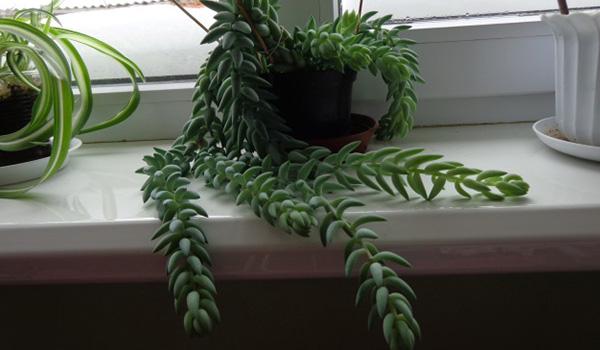
All ampelous species are unpretentious, develop well with a lack of sun. When grown in pots, regular watering is required.
Shrubs
Sedum with tall bushes and peduncles is more popular with flower growers. They are clearly visible in flower beds, they are planted in separate clumps or form large groups of different shades. Their stems do not cover the ground, so crops need regular watering.
Red dot
The peduncle of the sedum rises to 60 centimeters, the color of the buds is white and different shades of pink. The foliage is not particularly bright, gray-green in color. The main difference between stonecrop red-dotted is late flowering, which occurs in September. Do not plant in cold regions.
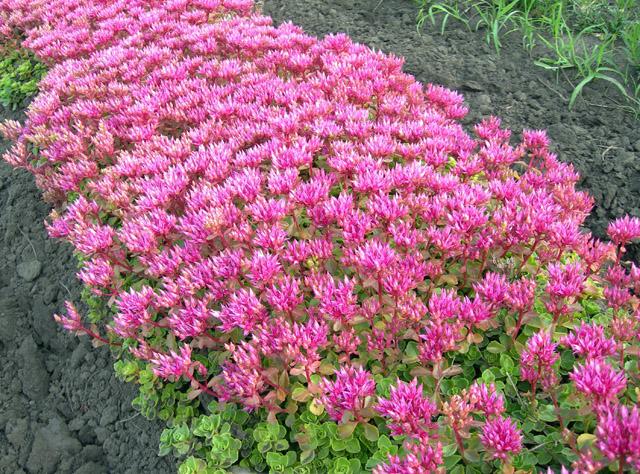
Tenacious
The herbaceous perennial is found naturally in the Far East and Siberia. Grows on forest edges, meadows, rocky river slopes. Refers to poisonous plants.
Ordinary
The tall-stemmed type of stonecrop is among the most popular. Popular garden varieties have been created on its basis. Bright petiole leaves have denticles at the edges. The peduncle rises 40-60 centimeters. Flowers bloom at the end of July. The scutellum inflorescence is densely packed with buds, the opening flowers look like stars. The best varieties are Matrona, Linda Windsor.
Prominent
Natural species, came from Asia, has long been cultivated in Japan. The bush is erect, grows up to 60 centimeters. Leaves are sessile, dense, green. The inflorescences stand on a dense stalk, up to 15 centimeters in diameter. Flowers of pink or carmine-red hue, the size of each is no more than 10 millimeters.
Sedum prominent became the ancestor of many varieties - Neon, Xenox, Brilliant.
Adolf
An evergreen shrub with a large number of stems. Young foliage is green, fleshy, with age, a yellow and pink tint appears. Inflorescences are hemispherical, the color of the petals is white. When grown indoors, it blooms with difficulty.
Red-leaved
Red-leaved or red-colored sedum is a shrub with falling shoots that rise with age. Sheets are pronounced green with a red ending. The flowers are yellow.
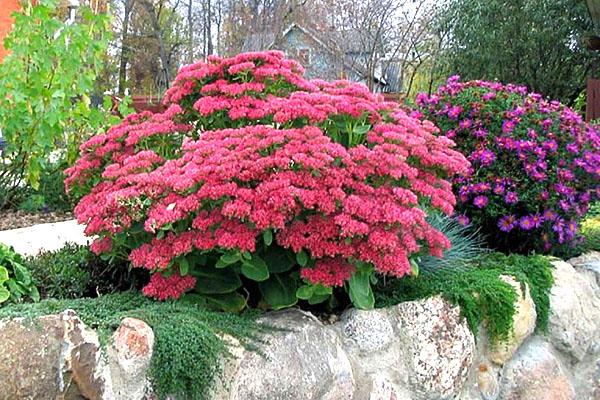
Rural
Selskogo sedum has woody stems up to 40 centimeters high. A flower of yellow tones on a short peduncle, the inflorescence is an umbrella. This type of stonecrop is not widespread. The shrub grows slowly, requires sunny areas and regular watering.
Purple
The dense foliage of stonecrop will become a real decoration of the garden. Sheets with carved edges, covered with a wax coating. The pink flowers stand out beautifully against its background. The peduncle rises to 70 centimeters. The stems are dense, the tall bush does not fall apart, keeps its shape. Blooms in July.

The foliage has a slightly sour taste, it is eaten fresh, fermented.
Yellow
Yellow or pale yellow sedum has green, brown foliage, sometimes with a bluish bloom. The flowers are yellow. Winter-hardy, unpretentious look. A popular variety is Red Wiggle.
Sedum Hybrid Abbeidor
Low bushes (35-40 centimeters) are covered with abundant green foliage. The color of the flowers is purple-pink. The bush is falling apart. The inflorescence is corymbose and very dense, with an abundance of buds. Used in mixborders.
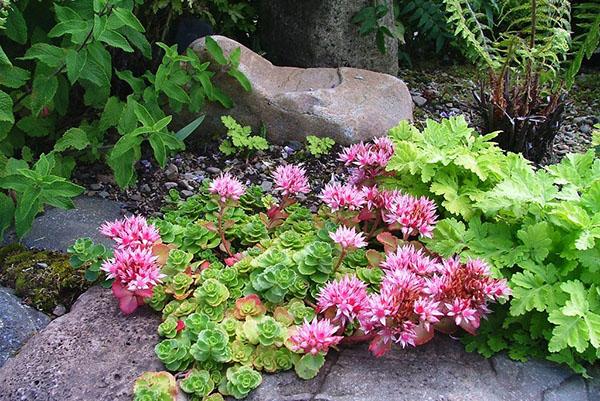
Cultivation of stonecrop in the open field
When growing sedum, it is important to imagine what kind of plant the plant will turn out to be. Many varieties tighten large areas of soil with stems, entwine neighbors.
Location selection
The sedum plant is planted in a well-lit area.Light shading is allowed only for a part of the day. Without enough sunlight, the bushes stretch out, the color of flowers and leaves suffers. Succulents do not like excess moisture, low-lying areas with stagnant water are not used. Drainage is done if necessary to drain the soil. For the same reason, you should not plant a bush under trees that drop foliage in autumn.
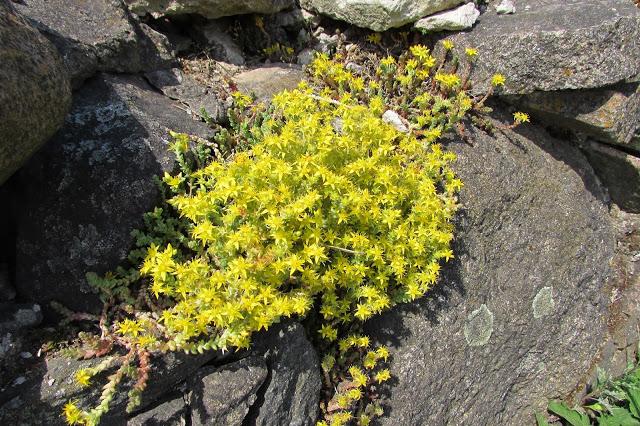
Preparing the soil
Sedum does not impose special requirements on the composition of soils; it grows well on any soil. It is important to ensure drainage and avoid puddles. With a high occurrence of groundwater, the beds are raised. Dig up the soil, carefully remove the weeds. Heavy clay soils are lightened with sand or fine gravel. Humus is added to increase fertility.
How to sow with seeds: timing and technology
In warm regions, sedum can be sown by seed in spring, directly into the ground, when stable warm weather is established. Most growers prepare seedlings in advance.
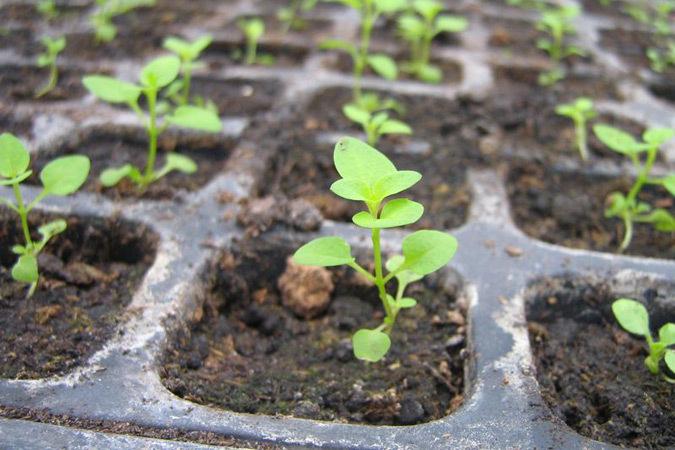
Basic rules for planting stonecrop:
- Sedum is planted for seedlings in March-April.
- Soil composition - sand, humus, fertile soil in equal parts.
- Container - depth - 10-15 centimeters, with a laid drainage layer.
- Spill the soil well, leave for impregnation.
- Place seeds in shallow grooves, sprinkle with soil.
- Close with foil.
- Water with a spray bottle as it dries.
It is recommended to keep the containers in the cold (5-7 °) for several days. Seedlings appear in 2-4 weeks. When the third leaf grows, the seedlings dive.
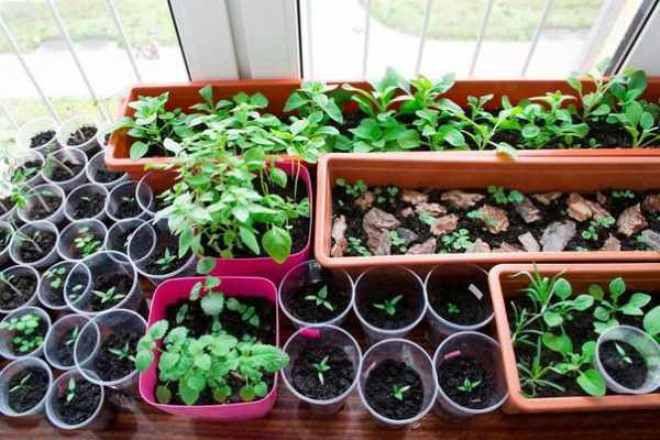
Planting seedlings
Ready sedum seedlings are transferred to open ground when the danger of freezing has passed. For different regions, this is the beginning and end of May. Seedling holes are made at a distance of 15-20 centimeters, they use the recommendations for planting this plant variety. The root system of the sedum is small, it is impossible to bury the seedling. Enough holes with a depth of 20 centimeters. After planting, the plants are watered abundantly.
Help: sedum bloom begins 2-3 years after planting.
Plant care
The sedum is classified as an unpretentious crop; most varieties do not need special care. It is important to remove weeds in time, carefully removing them from the beds. Weed grass clogs sedum, slows down growth.
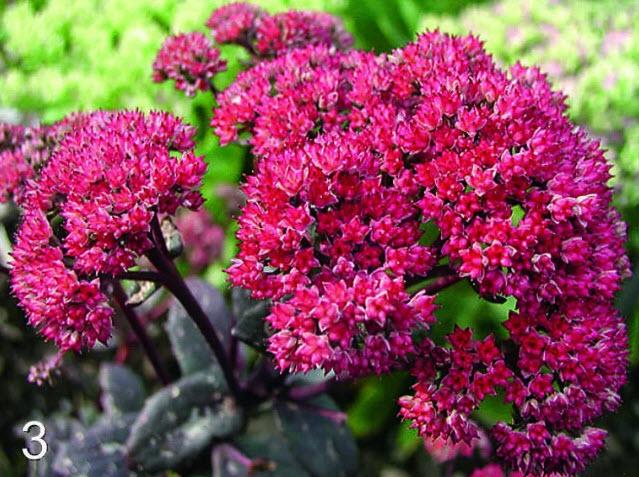
Watering
Sedum does not need frequent regular watering. The sedum is watered only during dry summer, 2-3 times per season. The culture tolerates excess water worse than lack of water. After watering, the soil is loosened, creating oxygen access to the soil. Do this carefully because of the shallow roots.
Fertilization
Sedum does not need a large number of dressings. Ground cover species need not be fertilized. Feeding with nitrogen is especially careful, which violates the decorative effect of foliage and reduces frost resistance.
It is permissible to feed tall sedums 1-2 times per season with complex fertilizers with phosphorus and potassium.
Transfer
Stonecrop can grow in one place for up to 5 years. In the future, the bush is aging, it needs rejuvenation. When you update a bush, you can transplant it to another location. The bush is dug up in the spring, when the vegetation process has not yet started violently, they shake off the soil. Cut into pieces with a clean tool, so that each has roots and buds. Leave for several hours in a shaded place. Sections are smeared with fungicides. They are planted in a new site.
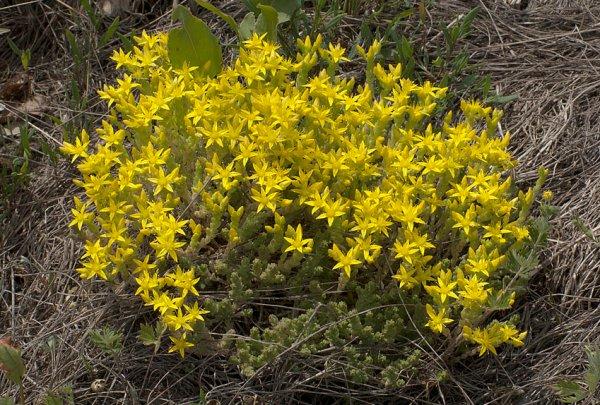
Pruning
Dried sections of the stem, damaged leaves are regularly cut off. On bushes with colored foliage, green shoots are cut to maintain the decorative effect of the plant. In September or October, the bush is pruned in winter, so it is easier to shelter the plant from frost.
Pests and diseases: control and prevention
In rainy summers and with excess watering, stonecrop suffers from fungal infections. Rot spots appear on stems and leaves. The damaged parts of the bushes are cut out, the plants are treated with fungicides.
Of the pests, caterpillars, weevils, aphids, thrips attack sedum more often than others. For cleaning, use insecticides of the appropriate action.
The sedum is not very susceptible to disease. When choosing a dry ventilated area without strong shading and low watering, it does not cause trouble for summer residents.
How is the wintering of a flower
Plants lose their foliage in autumn. In tall bushes of stonecrop, in preparation for winter, the stems are cut, leaving 3-4 centimeters. Dried flower stalks retain their decorative effect, therefore, bushes are often left near houses until spring. You can cut off the overwintered stems when the snow melts, before the beginning of the growing season. In cold regions, plantings can be insulated with loose soil, river sand or fine gravel. If necessary, sprinkle with snow on top.
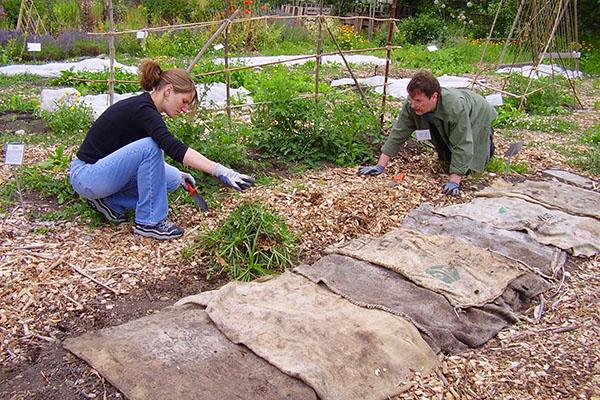
Stonecrop breeding methods
The reproduction of stonecrop is not particularly difficult. New plants are obtained by vegetative division and from seeds. Let's take a closer look at each method.
Seeds
Many growers get seeds from their own plants. To obtain seed, you need to keep the peduncles until completely dry and carefully cut. This is not easy to do, sedum blooms for a long time, often until the snow itself, the seeds do not have time to ripen.
Important: sedum hybrids do not give full-fledged seeds, parental properties are not transferred.
You can plant seeds for seedlings at home or directly in open ground. The second method is only suitable for warm regions.
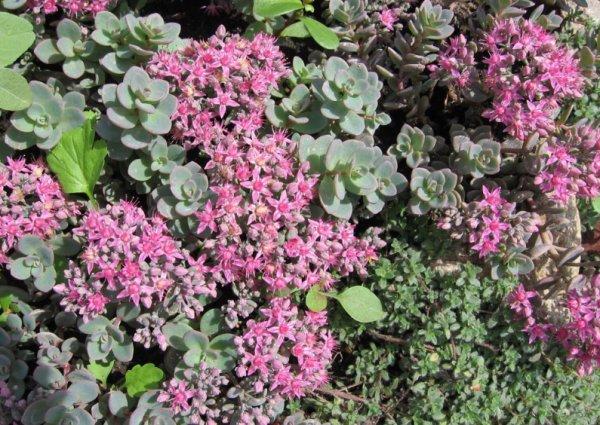
Cuttings
Most sedum species are easy to propagate by cuttings. This method is considered to be faster and more reliable. In the spring, a stalk with 1-2 buds is cut from a bush and deepened into the ground by 2-3 centimeters. The bottom sheets need to be cut to prevent decay. The prepared stalk can be rooted in a pot, and then transferred to the ground. When cutting cuttings in the fall, you will have to grow young seedlings at home. Sedum cuttings are placed in water, roots are allowed to regrow. After that, they are planted in separate pots.
Stonecrop is transferred to the soil in the spring, when warm weather is established.
The sedum propagates easily, the stem that falls to the ground quickly gives roots, forms a young plant. This property is used if sedum is already growing on the site. The soil around an adult bush is cleaned, loosened, fertilized. Press the stem to the ground with a hairpin, watered. Rooting is fast. When propagated by cuttings, a young bush fully retains the properties of an old plant.

Dividing the bush
Dividing one bush into several is another way to breed stonecrop. It is good if the sedum has already sat in one place, it is time to rejuvenate the plant. When dividing, it is important to remove the old part of the roots and bush, create viable layers with roots and buds.
Division is carried out when the main processes of vegetation have not yet started, the plant is not in the stage of active growth.
The cultivation and reproduction of sedum is within the power of any grower. The plant does not differ in a capricious character, grows well in drought conditions, does not need frequent feeding, pruning, and bush formation. Sedum attracts bees with a pleasant smell, contributes to pollination of neighbors. The medicinal properties of sedum are another undoubted advantage of the plant.
With the help of different types of stonecrop, you can arrange alpine slides, flower beds, and create borders. Sedum favorably differs from other flowering plants by its high decorative foliage and bush. A wide variety of species and varieties allows you to design the site in accordance with the characteristics of the territory and personal tastes.
